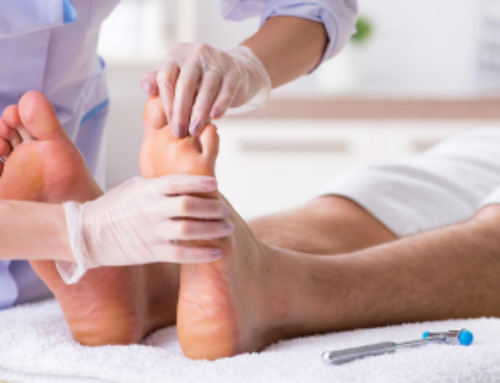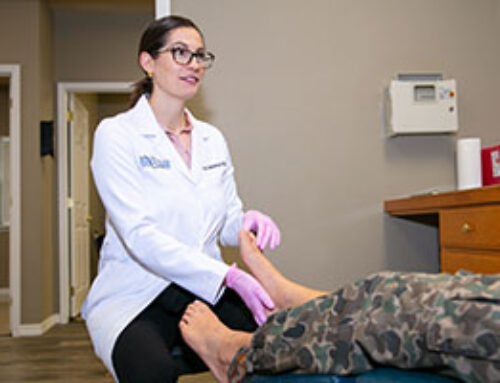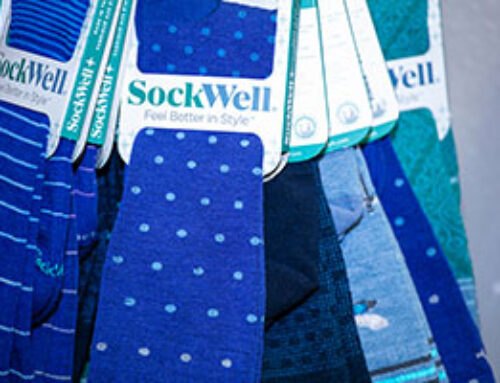Many pharmacies and sporting goods stores sell insoles you can insert into your shoes to provide support and relieve foot pain. Off-the-shelf insoles are usually made of a soft foam or gel that provides an extra layer of shock absorption to help protect your feet and prevent pain from spreading to your hips, back, and neck.
Shoe inserts are not harmful to your feet, as long as you use them properly. However, depending on how the insole is made and the condition you’re trying to treat, store-bought inserts can sometimes do more harm than good.
The difference between off-the-shelf insoles and custom orthotics
If you’re experiencing minor aches and pains that require a little extra cushioning, off-the-shelf insoles may offer effective relief. But if the structure of your foot or the pattern of your gait causes pain, a store-bought insole may not provide the stability and positioning needed to resolve the issue.
Custom orthotics prescribed by a podiatrist can help relieve the pain, discomfort, and fatigue that result when your muscles, tendons, ligaments, joints, or bones are not in an optimal functional position. While store-bought insoles are less expensive, they’re also much less individualized and may offer mixed results, depending on the underlying condition.
Choose shoes that are right for your feet
Of course, custom orthotics are not the recommended treatment for every type of foot or heel pain. In some cases, pain or discomfort may result if you wear shoes that are not correctly sized for your feet or shoes that don’t offer proper arch support.
The length and width of your feet may change as you age. To make sure you wear properly fitted shoes that are appropriate for the type of work or athletic activities you engage in, have your feet measured at a shoe store at least once a year. Also, remember that sizing may not be consistent between brands.
Potential side effects of off-the-shelf insoles
If you decide to try insoles, remember that everyone’s feet are unique. That’s why customization is key when it comes to providing relief from foot and heel pain. Off-the-shelf inserts and over-the-counter insoles ordered from a kiosk aren’t fully customized, so they may provide limited relief or no relief at all.
An ill-fitting insole can often wind up being worse than using no insole at all. Potential side effects include:
- Increased soreness — In some cases, insoles may provide unnatural support that makes your feet work harder. The ineffective support may increase your pain or transfer it from your foot to your legs, hips, back, or another part of your body.
- Higher pressure — Adding cushioning and support to one area may redistribute weight across the feet in ways that add pressure to other areas.
- Altered mechanics — Choosing the wrong type of insole may shift your bodyweight in unexpected ways or interfere with the proper functioning of your ankles and feet, which could increase your risk of injury.
- Heightened discomfort — Insoles that are made from inexpensive or inferior materials may wear down quickly and lead to pain.
Custom orthotics for foot or heel pain
People often use custom orthotics to relieve foot pain. Orthotics are also popular for runners and athletes who want to prevent injuries.
Podiatrists prescribe custom-made orthotic devices to help those who suffer from foot, heel, ankle, or knee pain, including:
In addition to providing essential support, custom orthotics can help relieve pain associated with misaligned bones or joints and improve the overall function of your foot and ankle. They can also provide extra cushioning, particularly in cases where excess pressure is being placed on a sensitive area of the foot.
Prescription orthotics are made from high-quality materials and custom-designed for your natural body mechanics. Podiatrists use different materials with varying degrees of rigidity and flexibility, depending on your condition.
Orthotics that are custom-designed specifically for your feet can reduce pain, stabilize joints, improve the function of your feet, and promote good posture.
Custom orthotics are crafted just for you
If you need orthotics, it’s important to note that the standing analyzers you find in some sporting goods stores don’t offer the individualized examination and analysis a trained professional provides. The most effective way to treat foot, heel, or ankle problems is to see a podiatrist who will review your health history, height and weight, level of physical activity, and current symptoms.
Your podiatrist will also perform a thorough evaluation that includes scans of your feet and gait, along with a complete biomechanics analysis, to diagnose the cause of your pain. Based on the results, podiatrist will recommend a treatment plan that is right for you—one that may or may not involve custom orthotics.
To make custom orthotics that fit the unique shape your feet, pattern of your gait, and preferred type of shoe, your podiatrist will use 3D scanning technology to create an impression mold of your feet. The result is a medical device that’s crafted just for you and provides the right amount of support and level of rigidity and flexibility you need.
If you’re experiencing foot, heel, or knee pain, the team at Metro Tulsa Foot & Ankle Specialists can diagnose the cause of your pain and recommend a treatment plan that is right for you. Schedule an appointment today at one of our five convenient locations.
Subscribe to stay up-to-date on news and tips from us.





